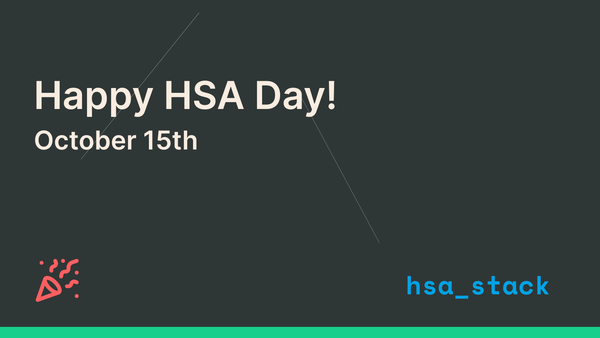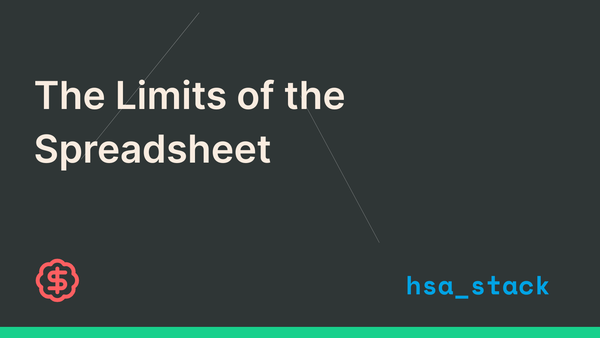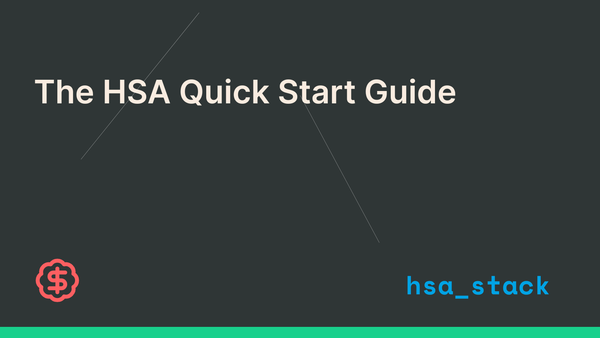The F.I.R.E. Bridge: A Guide to Using Your HSA for Early Retirement Income
For early retirees, bridging the cash-flow gap before 59½ is a critical puzzle. The HSA offers a powerful, tax-free supplement to traditional F.I.R.E. strategies. This guide details the 'HSA Bridge,' its pros and cons, and the tools required to execute it with confidence.

For those on the path to Financial Independence, every decision is a calculation. You optimize your savings rate, debate the merits of a Roth ladder, and design the systems that will one day carry you to your goal. One of the most significant puzzles to solve is the cash flow gap: the years between your target retirement date and the age you can draw from traditional accounts without penalty.
The F.I.R.E. community has established powerful pillars to bridge this gap, with taxable brokerage accounts doing the heavy lifting, often supplemented by strategies like the "Rule of 55" or 72(t) SEPP payments.
But there is another, often underrated, tool that can provide a powerful stream of tax-free cash to complement these strategies: The HSA Bridge.
The HSA Bridge Strategy: How It Works
The strategy is an extension of the "delayed reimbursement" method many HSA optimizers already use. The goal is to treat your HSA as a "stealth" retirement account by paying for current medical expenses out-of-pocket, allowing your HSA funds to remain invested and experience decades of tax-free compounding.
Every time you pay for a qualified medical expense (QME) with a post-tax dollar, you are essentially creating a tax-free withdrawal credit for the future.
The Bridge: When you enter early retirement, you can redeem those credits. You "reimburse" yourself for a batch of old, documented medical expenses, pulling cash from your HSA completely tax-free. Once reimbursed, the money is yours to use as you see fit—covering living costs, funding a trip, or smoothing out a lumpy tax year.
Let’s look at a plausible scenario. An optimizer pursuing F.I.R.E. might incur an average of $4,000 in out-of-pocket QMEs annually over 15 years while also maxing out their HSA contributions. They would have a "reimbursement shoebox" of $60,000. That’s $60,000 of tax-free cash available to supplement their taxable account withdrawals during the bridge years.
Is This You? A Quick Math Check
Wondering if your spending could build a meaningful bridge? Consider this:
- The 2025 family HSA contribution limit is $8,550 ($9,550 with the age 55+ catch-up).
- A family hitting their annual insurance deductible could easily have $3,000 - $5,000 in QMEs.
- Add in dental, vision, prescriptions, and therapy, and reaching $4,000 - $6,000 in annual QMEs is realistic for many.
Over 10-15 years, this consistent stacking builds a powerful reservoir for tax-free reimbursements.
The Crucial Trade-Off: Today's Bridge vs. Tomorrow's Healthcare
Leveraging the HSA bridge is a powerful option, but it comes with a significant trade-off that requires careful consideration.
Pros of Using the HSA Bridge:
- Tax-Free Liquidity: Provides a source of cash that is 100% tax-free, unlike withdrawals from taxable or tax-deferred accounts.
- Flexibility: Allows you to "turn on" income in specific years to manage your tax bracket or avoid selling assets in a down market (sequence of returns risk).
Cons & Risks:
- Depletes Future Healthcare Funds: You are spending down the only account specifically designed for tax-free medical spending. This leaves less in the tank for the typically higher healthcare costs of your 70s and 80s.
- Requires Impeccable Record-Keeping: This strategy is entirely dependent on your ability to produce proof of expenses from many years, or even decades, prior.
The Non-Negotiable: A Bulletproof System of Record
This brings us to the operational reality of the HSA Bridge. To execute this strategy is to think like a systems designer. The goal is to create a flawless system that is organized, defensible, and built to last for 30+ years.
A spreadsheet and a cloud folder feel "good enough" in year three. By year ten, they become a complex liability. By year twenty, they are a source of significant audit risk. A dedicated system built for this purpose ensures every receipt is captured, classified, and ready for a potential audit decades later.
Integrating the Bridge Into Your Master Plan
The HSA Bridge is an advanced strategy that does not exist in a vacuum. Executing it successfully means navigating other complex variables in the F.I.R.E. landscape, such as managing your income to avoid ACA subsidy cliffs or planning around sequence of returns risk.
Because every financial situation is unique, it is always wise to research these topics further and consult with a qualified, fee-only financial planner or CPA. They can help you model how this strategy fits into your holistic financial plan, ensuring all parts of your early retirement machine are working together.
Further Reading & Resources
- IRS Publication 969: The official source for Health Savings Accounts.
- The Mad Fientist - The HSA: An excellent deep dive on HSA optimization for financial independence.
- hsa_stack: A tool engineered for the long-term record-keeping this strategy demands. Learn how we help you capture today to build your bridge for tomorrow




